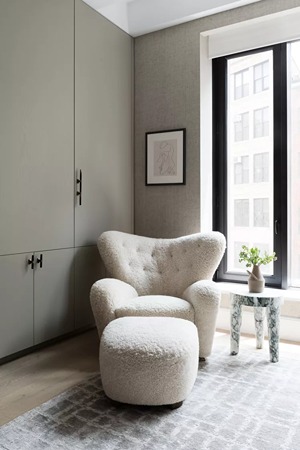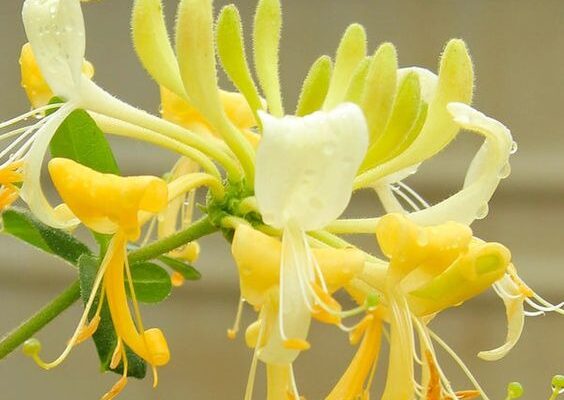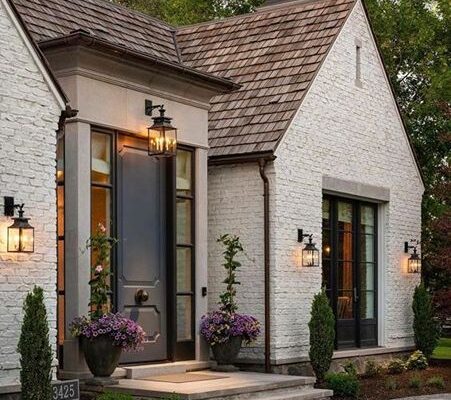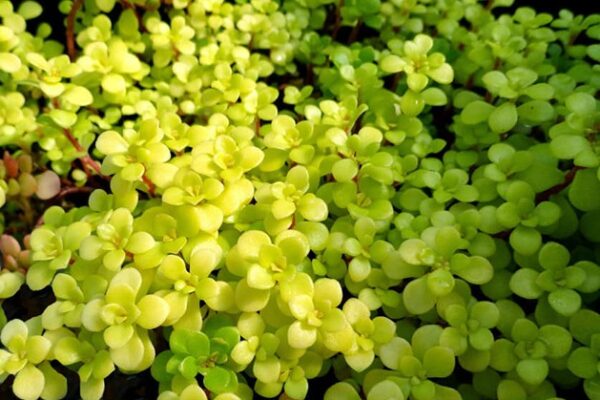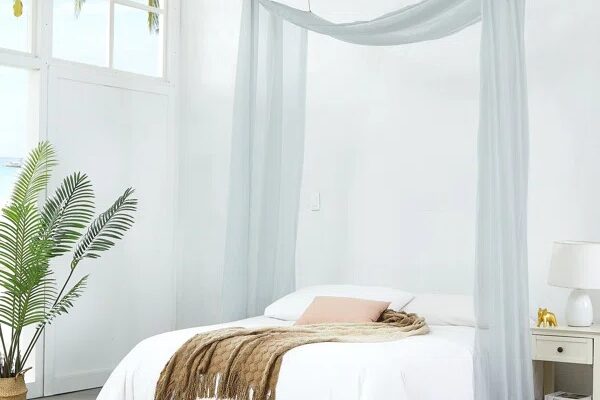15 Authentic Design Styles: Choose Them
In the realm of design, being confined to a particular category is undesirable. In the past, showrooms and well-designed homes were meticulously created to represent a specific aesthetic or design philosophy, but that approach has changed. Nowadays, the essence of good design lies in the fusion and customization of various design styles to suit individual spaces, preferences, and personal flair. The key is to derive inspiration from diverse design styles and skillfully combine them in a manner that is harmonious, visually appealing, and, above all, meets the needs of the people utilizing the space.
However, it is essential to familiarize oneself with the multitude of design styles available in order to draw from them effectively. Even the most distinctive and captivating spaces are influenced, at least in part, by the fundamental design styles that preceded them. The adage that one must know the rules before breaking them applies to design as well. Every aspiring designer, and even seasoned professionals, should be well-versed in the various design styles at their disposal. This knowledge enables them to selectively incorporate elements from different styles while discarding others.
Even if you have never consciously contemplated how you blend styles and aesthetics in your surroundings, you have likely employed some understanding of essential design styles to shape your own unique look. Now is the opportune moment to transform that intuitive comprehension into something tangible. We have compiled a collection of crucial design styles that everyone should be acquainted with, whether you are striving to fashion your dream home or simply seeking to identify aspects you dislike in certain spaces. Continue reading to explore both time-honored and contemporary design styles that you can adapt and build upon today. Who knows, you might even stumble upon a novel aesthetic to explore in your upcoming endeavors.
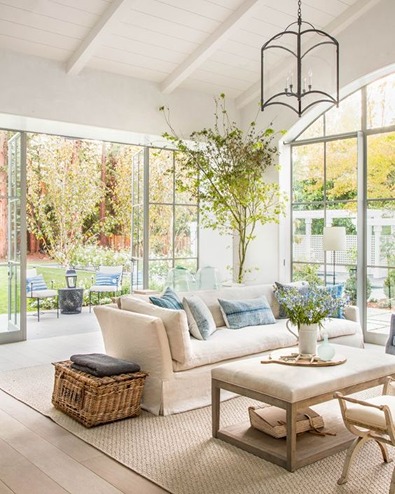
1. Wabi-Sabi
Derived from the Japanese philosophy of the same name, the wabi-sabi design style encompasses an attitude and overall approach rather than focusing on specific decor features. It embraces the concept of slow living, finding beauty in nature, and appreciating imperfect yet visually appealing objects. Spaces that embody the wabi-sabi approach are characterized by a sense of simplicity, tranquility, and modesty. They exhibit clean lines, utilize natural materials, and employ restrained color palettes.
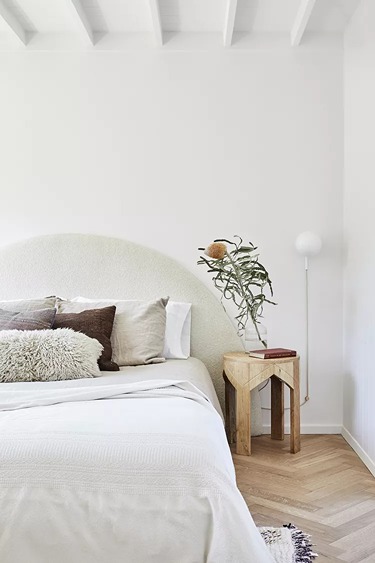
2. Scandinavian
Scandinavian design shares a close relationship with minimalist design, but it distinguishes itself through the inclusion of plush textures and a strong emphasis on coziness. Spaces adorned in this style often boast layered elements and abundant natural light. The color palettes commonly consist of monochromatic tones, with an abundance of blacks, whites, and grays, while incorporating wooden textures to maintain a warm atmosphere. The presence of furs (both genuine and faux) is a telltale sign that a space is designed with Scandinavian style in mind, setting it apart from the aesthetic of minimalist design.
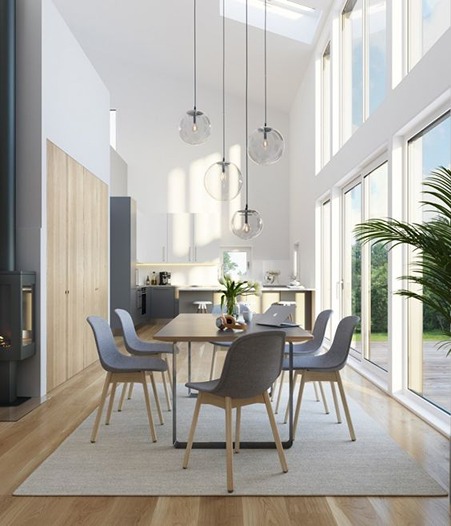
3. Maximalist
Diametrically opposed to minimalist design, we find maximalist design on the other end of the spectrum. This style exudes a celebration of abundance, boldness, and the harmonious blending of various colors, patterns, and textures. Maximalist design is characterized by vibrant wallpaper prints, daring and often layered floor coverings, extensive gallery walls, and prominently displayed collections. It draws inspiration from a multitude of design styles, incorporating their rules and features in an exuberant and audacious manner. Maximalism shares many resemblances with grandmillennial and eclectic design, albeit executed with an unapologetic more-is-more approach.
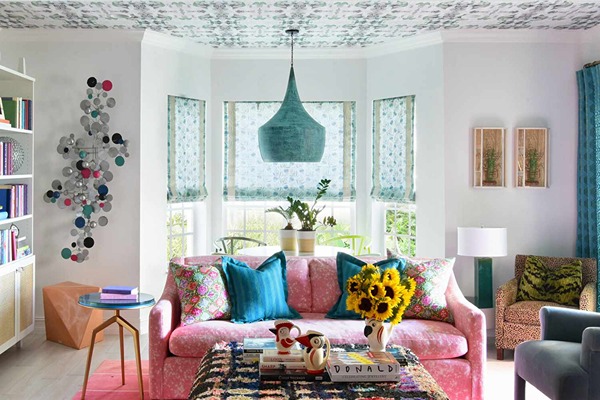
4. Eclectic
Eclectic design, much like maximalism, thrives on its mixing, matching, and layering approach. However, eclectic spaces often strike a harmonious balance by incorporating neutral foundations alongside their distinctive blend of multiple design styles. Imagine a tufted sofa accompanied by layered, patterned rugs and a rounded coffee table adorned with metallic finishes, all set against a backdrop of white walls. While maximalism embraces an unreserved more-is-more mindset, eclectic design acknowledges the beauty of abundance while tempering that mentality with neutral wall colors or understated flooring (though bright rugs are still an integral part of the equation).
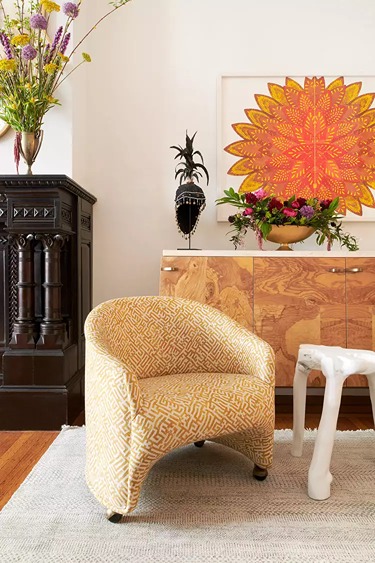
5. Farmhouse
Farmhouse design has transcended its origins and become a beloved style in urban, suburban, and rural homes alike. Its timeless allure and inviting ambiance are hard to resist. In practice, farmhouse design tends to be warmer, more contemporary, and infused with a vibrant color palette, setting it apart from the rustic aesthetic. However, with the appropriate elements, farmhouse design can also encompass rustic elements, leaning more towards that style. It evokes a sense of nostalgia and is characterized by features such as open shelving, exposed beams, a mix of finishes, natural wood elements, and, of course, and the ever-popular shiplap accents. Industrial details, subway tile, neutral color schemes, and open floor plans are also prominent elements frequently incorporated into farmhouse design.
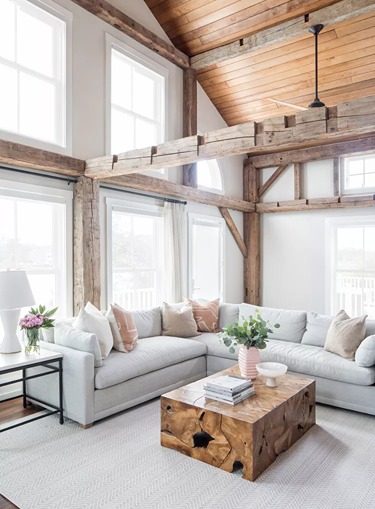
6. Modern Rustic
Overflowing with personality, modern rustic decor harnesses the beauty of raw and natural materials to craft spaces that exude simplicity without appearing cold. Offering a more understated approach than the beloved farmhouse style, modern rustic design seamlessly blends distressed, textured, reclaimed, or refurbished surfaces and objects with the clean and sleek lines of modern design. Environments adorned in this style commonly feature neutral color palettes, preserved and/or exposed architectural elements, and a meticulous equilibrium between rustic and modern features.
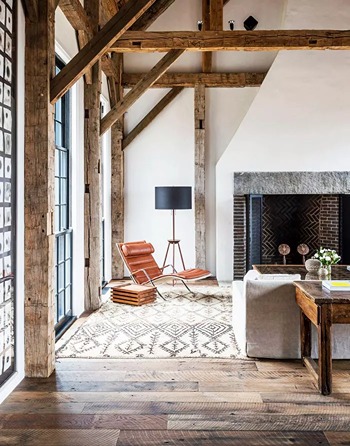
7. English Cottage
Serving as the predecessor to cottagecore, English cottage design draws inspiration from the charming cottages found in rural England. This style emanates a rustic, cozy, and inviting atmosphere, creating a sense of relaxation and approachability. Key elements of English cottage design encompass the use of wood and brick surfaces, soft pastels and other muted colors, abundant greenery, and natural accents. Similar to farmhouse design, exposed beams, raw finishes, and wall paneling are prevalent features in English cottage style. However, English cottage design leans towards a quaint and snug aesthetic, in contrast to the larger and more open feel often associated with farmhouse-inspired spaces.
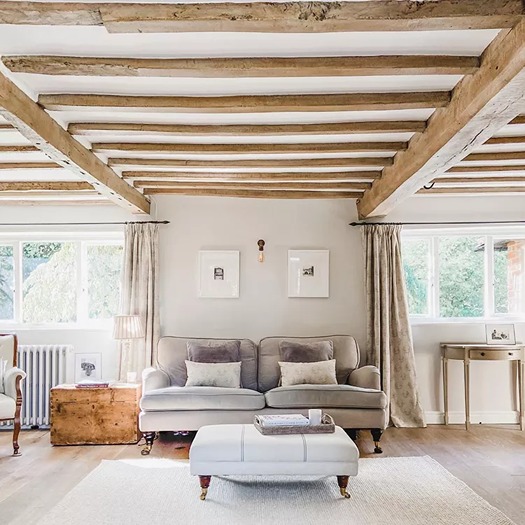
8. Modern
Modern decor is renowned for its versatility and expansive range as an essential design style. Its influence can be observed in various design approaches such as midcentury modern, Scandinavian, minimalist, transitional, and art deco, among others. However, there are a few fundamental elements that distinctly characterize modern design. Modern spaces are known for their sleekness, featuring clean lines and sharp edges. They often exhibit an understated aesthetic and employ color schemes that consist of complementary tones or shades of gray, black, and white. The use of natural materials and metals can be incorporated into modern decor, depending on their application.
While modern design allows for countless adaptations, it generally tends to prioritize simplicity and relies more heavily on straight lines and right angles than traditional design.

9. Midcentury Modern
The decor of midcentury modern style is characterized by its distinctive simplicity of form. Furniture that embodies this style is often designed to be low to the ground and compact. The overall aesthetic showcases futuristic elements, such as headrests shaped like amoebas or coffee tables shaped like boomerangs, along with a preference for solid colors. It is no surprise that this style enjoys immense popularity due to its emphasis on functionality, remarkable adaptability, and seamless integration with elements from other styles. Incorporating midcentury modern features into almost any space is effortless. What sets midcentury modern design apart from its modern counterpart is its broader utilization of color, particularly pastel pinks, earth tones, and primary colors, as well as the presence of softer and more rounded silhouettes.
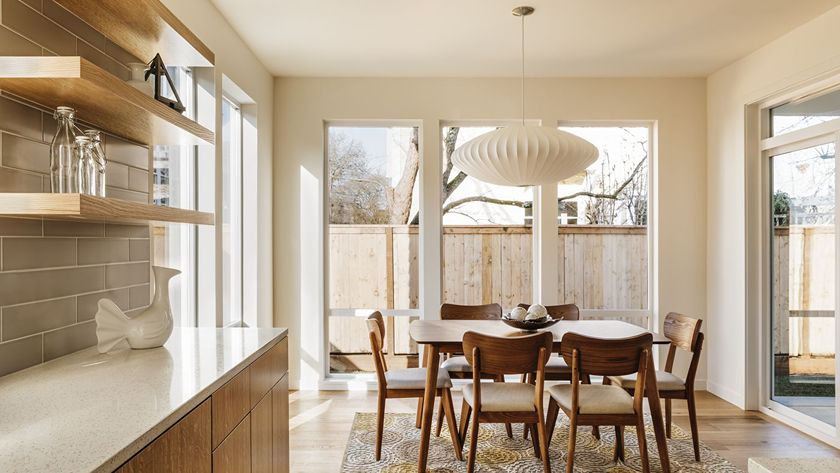
10. Art Deco
Art Deco, the opulent and jewel-toned relative of modern design, has established itself as an unquestionably luxurious style. Originating in the 1920s, ’30s, and ’40s, this essential design style is marked by its geometric patterns, symmetrical arrangements, vibrant colors, and shimmering metallic finishes. While it is sometimes refined to suit contemporary tastes, Art Deco exudes a retro charm, evoking a sense of playfulness and captivating visual appeal. It can be seen as the flamboyant predecessor to midcentury modern design.
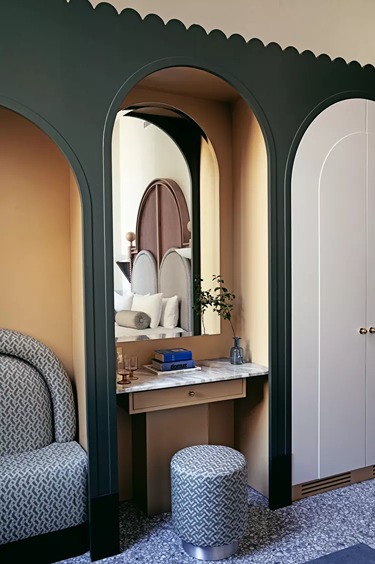
11. Transitional
The essence of transitional style lies in the harmonious fusion of traditional and modern or contemporary design elements. It embraces the inherent charm and familiarity of traditional design by employing traditional layouts, materials, or silhouettes, while also integrating modern features to infuse spaces with a sense of freshness and informality. A distinguishing characteristic of transitional style is the deliberate juxtaposition of very traditional elements, such as crown molding or classic printed wallpaper, with unmistakably modern touches. For instance, envision a timeless mantled fireplace coexisting with a contemporary curved sofa. Although transitional style is essentially a delicate equilibrium between the two styles, its inclination towards traditional or modern aesthetics can vary depending on the specific space and the preferences of its occupants.
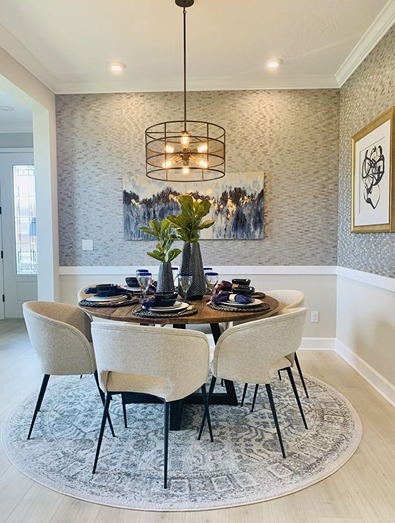
12. Minimalist
Minimalist design has gained both significant popularity and stirred divided opinions in recent years. It adheres to the fundamental principle of minimalism, advocating that less is more. Although the style has its origins in the 1960s art movement of the same name, contemporary interpretations of minimalist design emphasize simplicity, neutral color palettes, and clean, straight lines. The essence of minimalist design revolves around eliminating clutter and excessive decorative items, while placing a strong emphasis on functionality. In today’s context, minimalist spaces can range from sparsely furnished and stripped-down to more open and spacious settings featuring a few carefully selected luxurious pieces. However, almost all minimalist spaces incorporate an abundance of natural light, utilize natural materials, and strive for an open flow. While it is not uncommon for minimalist homes to predominantly feature white color schemes, many modern minimalist spaces now incorporate the thoughtful inclusion of color and natural finishes.
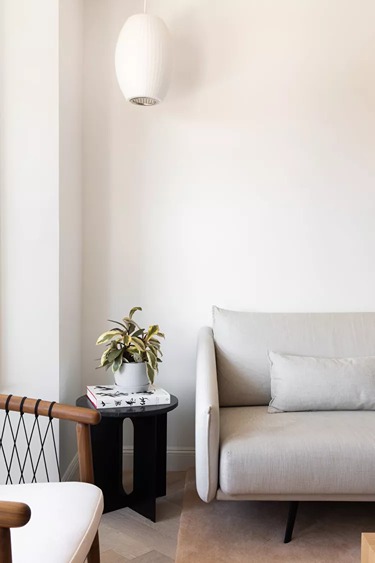
13. Modern Coastal
Embodying a sophisticated beach house vibe rather than a rustic seaside cottage aesthetic, modern coastal decor seamlessly integrates elements of modern design to evoke a relaxed and beachy ambiance. While spaces adorned with modern coastal decor are frequently situated near the shore, they pay homage to their coastal location in a subtle manner. This is achieved through subtle touches such as seagrass rugs, refined driftwood accents, and similar elements. The appeal of modern coastal decor has extended beyond coastal regions, as people in non-coastal locations also embrace the allure of woven textures and dreamy color palettes inspired by the beach.
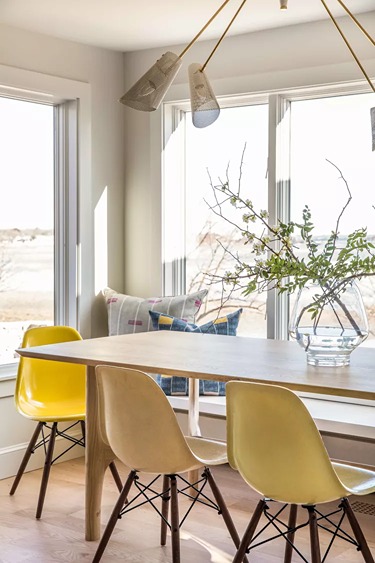
14. Mediterranean
Mediterranean design serves as a junction where minimalist sensibilities intersect with coastal styles, often resulting in a more streamlined approach. Defining Mediterranean design can be a bit elusive compared to other styles, yet its distinctiveness becomes evident upon encountering it. Texture plays a significant role in Mediterranean design, often embodied through plaster walls that convey a rugged aesthetic distinct from modern or minimalist decor. Archways, minimal wall adornment, and an abundance of natural finishes and intricate details further distinguish this style. When you envision a space perched on a scenic cliff overlooking the Mediterranean Sea, there’s a high likelihood that you’re envisioning some variation of Mediterranean design.
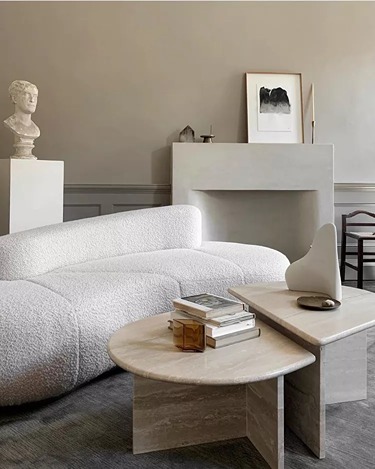
15. French
French decor exudes undeniable elegance. It leans towards opulence, yet maintains a refined aesthetic rather than being overly flashy, thanks to the prevalence of vintage and antique accents. The color palettes commonly associated with this style are often muted, creating a backdrop that allows grand focal points to take center stage. These captivating elements can include a dramatic traditional four-poster bed, a striking chandelier, or an oversized gilt mirror, all contributing to the overall allure of French decor.
